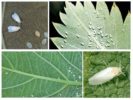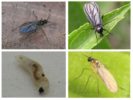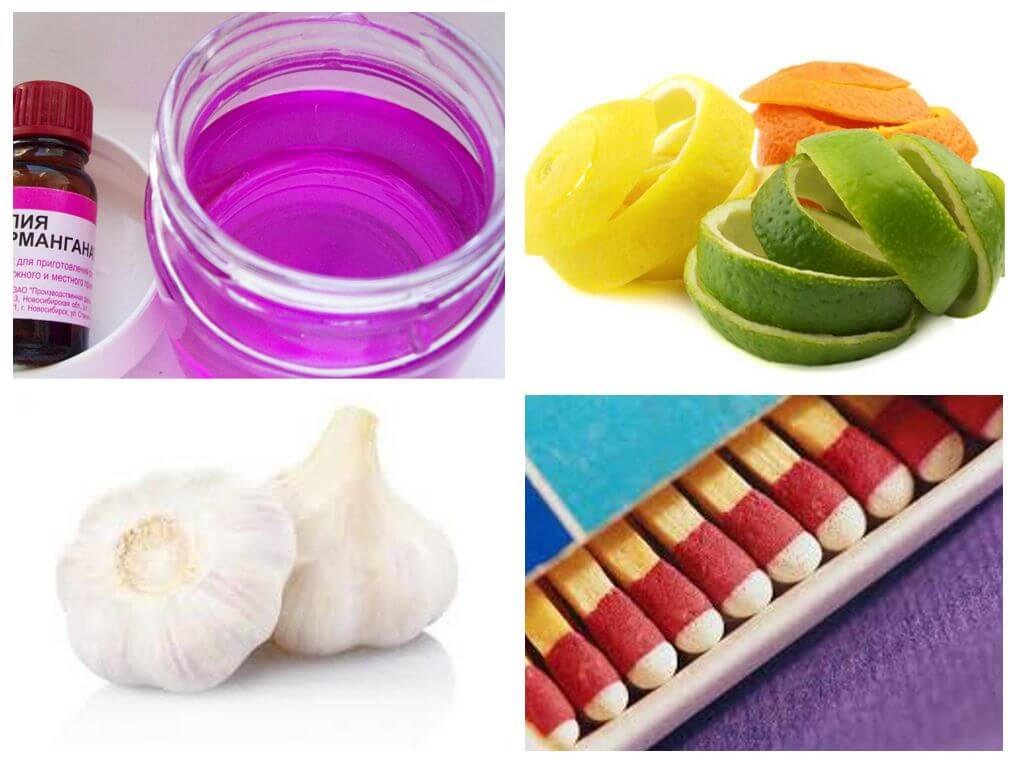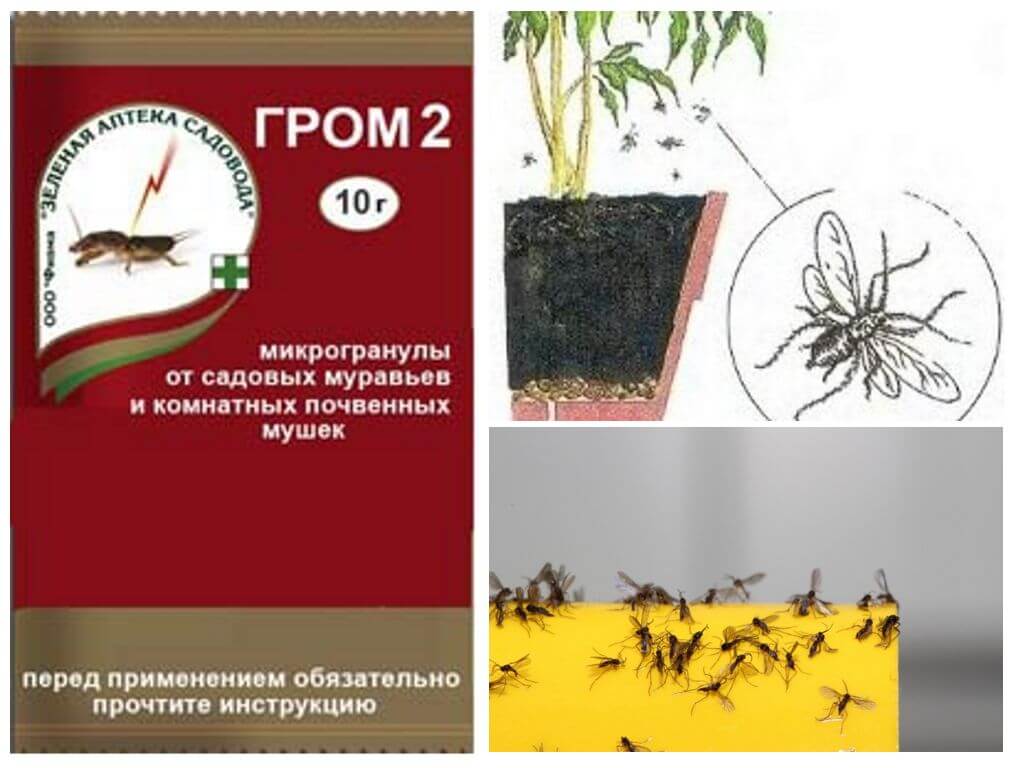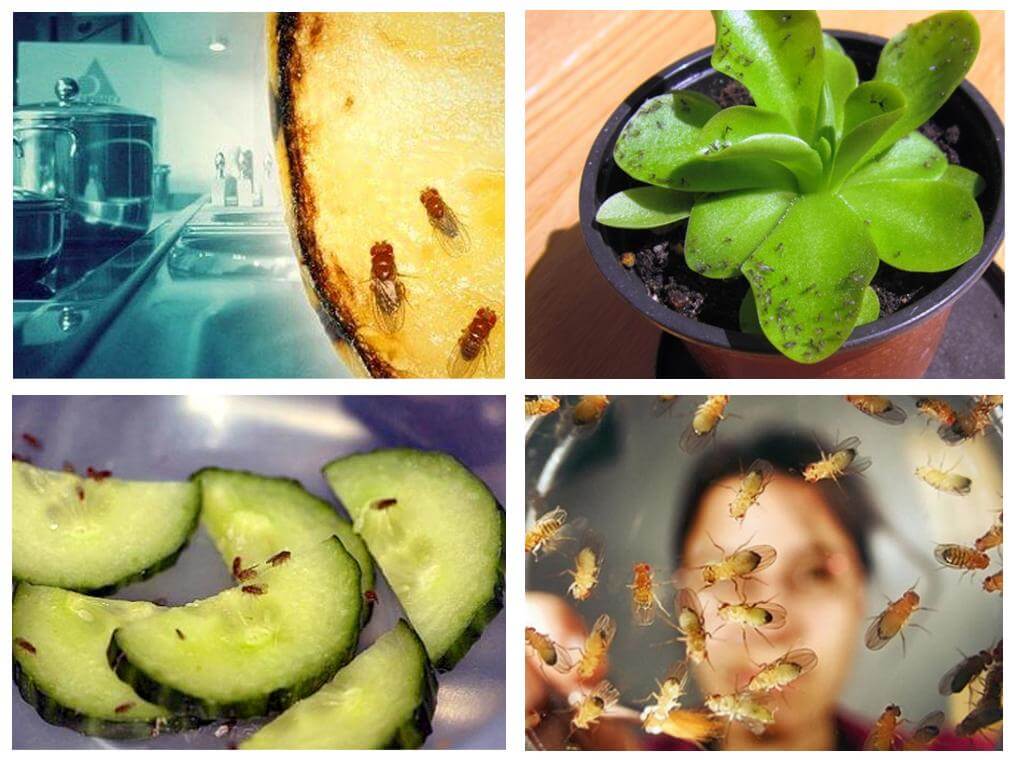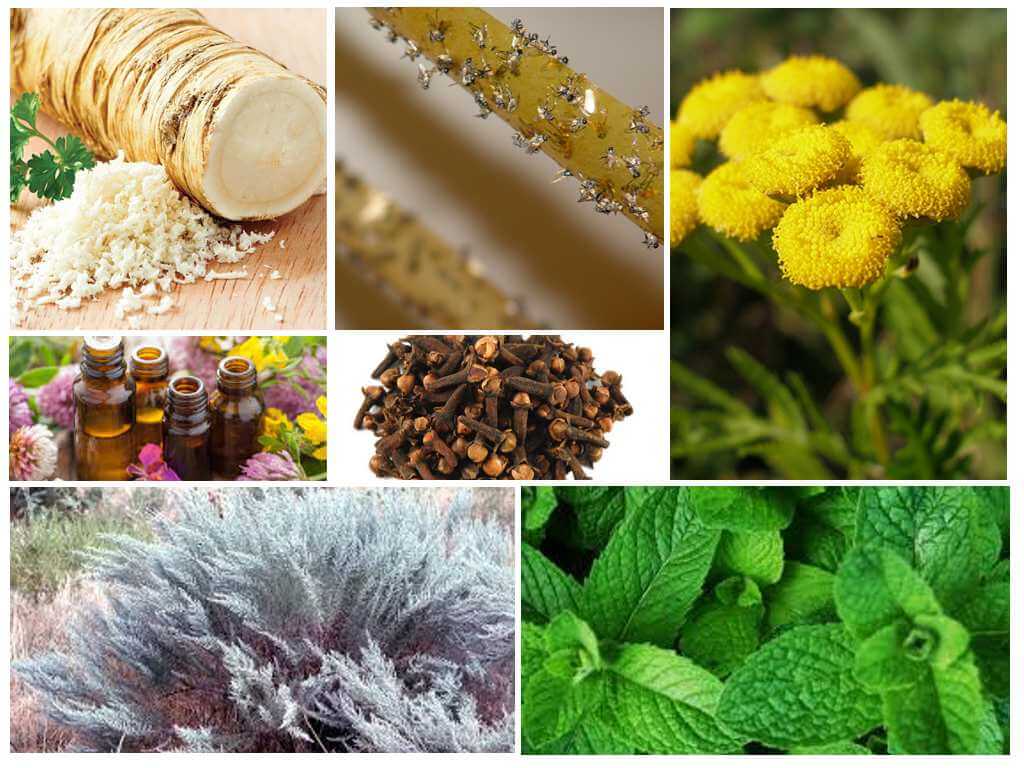- White midges in flowers
- Sciarida
- Folk techniques from flower midges
- Remedies for flower midges
And now the owner of the home greenhouse raises the question of how to get rid of midges in indoor flowers.
Why do gnats start in flowers
Caring for plants at home is not as simple as it seems. It is necessary to observe the rules specific to each flower, attentiveness to details and a huge love of flowers. Some people think that they have a “heavy hand” and they are not able to grow flowers. But this is not so if you carefully study the issue and follow the recommendations. First of all, it is necessary to decide whether you are ready to properly water, fertilize in a timely manner, transplant plants competently, or will this be done once, or reluctantly? If you are ready to pay attention to plants, if you want to create additional comfort in your home with the help of green pets, then you should be prepared not only to receive joy from them, but also to protect them from various pests, such as flower midges.
Important! Most of these insects do not harm the flowers “personally”, but they lay larvae in the ground or the plant itself. But larvae feed juice from roots or leaves, causing enormous damage to the flower, causing rotting and death of plants.
Seeing that midges in room flowers are wound up, you should not say goodbye to plants, preparing to take them to the trash - it's not difficult to save them. To independently remove midges, it is important to find out why they arose. Most often this happens for the following reasons:
- High soil moisture. In the heat, many housewives often water flowers, suggesting that he does not have enough water. Water stagnates, favorable conditions are created for the appearance of midges;
- Window open. Indoor midges can enter the housing through a window. Having found suitable conditions, they are happy to celebrate a housewarming party;
- Soil did not pass disinfection. The poor-quality soil is characterized, among other things, by the fact that it did not complete the decomposition of all components and left unrefined foliage in it. Such soil is a great place for the development of larvae.
Types of flower midges
Flying flowers are visible even with the naked eye. Indoor plants are dominated by two species.
White midges
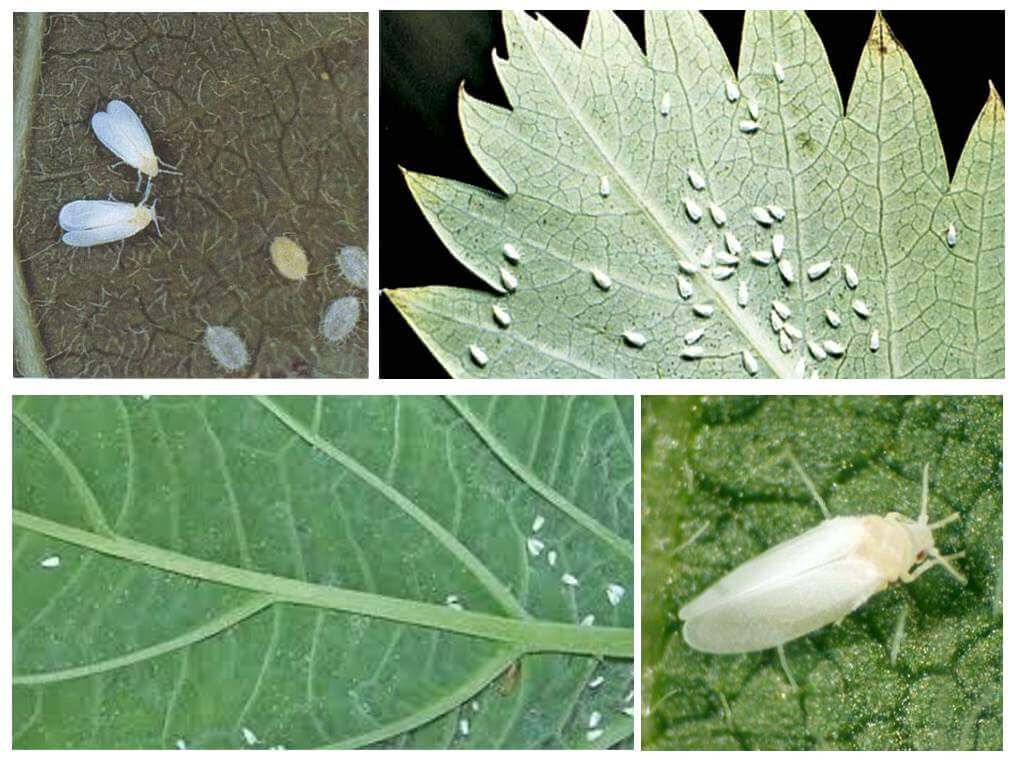
Most often, white midges (poredy, Drosophila, whiteflies) You can find them at the surface of waterlogged soil or at the very foot of a flower pot. Their various types can be seen in the photo.
Ponds are small insects up to 1 mm long. Most often white or yellowish brown. Active leaf-jumping pests. Larvae cause irreparable harm to the plant, if they are not fought on time. These midges on flowers appear mainly in the winter or at the beginning of spring, when moisture does not evaporate so quickly from the ground.
Sciarides
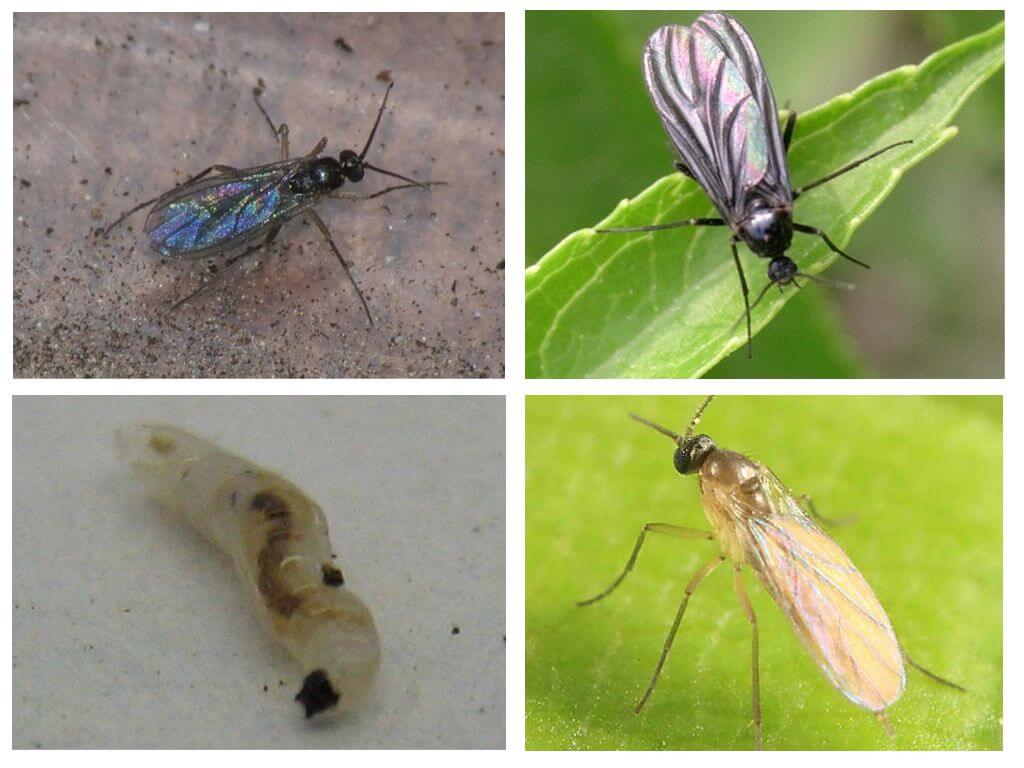
Sometimes black midges are noticeable in the flowers. Most often these are sciarides flying over a plant. They are not harmful to humans, but they are very annoying to him, flying around the house, falling into food and drinks. With all the harmlessness to humans, they are very dangerous for a flower. A huge number of larvae sciarid damages the roots, compacts the ground, making it difficult for air to enter. The plant turns yellow, the leaves curl, the look becomes “wrinkled”. If almost transparent worms up to half a centimeter long are visible in the soil, then it is infected with sciarides, which must be destroyed as soon as possible.
Black midges in the soil start if you fertilize the flower using the "grandfather" methods: tea leaves, humus, and other organic waste. Pests can get into the house with purchased soil, which is poorly sanitized.
Favorite midges flowers
Experienced breeders say that not all plants are susceptible to attack by midges. So, the tailed tail settles only on those plants that have soft leaves: begonia, fuchsia, orchid etc. Sciarides love to live on flowers that have a dense structure of greenery: azalea, violet, ficus, decembrist and the like.
Aloe midge almost does not touch, she does not like tobacco and mint aromas.
How to deal with midges in indoor colors
If a midge has been started recently, it is not difficult to get rid of it, and it will not require much financial costs. There are a lot of ways to get rid of midges in indoor plants, among them are both folk remedies and the use of chemicals. It is important that all methods are equally effective in combating black and white parasites.
Folk methods
These are the safest ways for humans. The most common are those that do not require the acquisition of complex ingredients.
- To get rid of midges in flower pots, you need to water the ground with a slightly pink solution of potassium permanganate. If it is not enough to dilute manganese with water, the roots of the plant may die.
- You can just stick the peel of an orange into the ground - most pests cannot stand such harsh odors.
- Many advise sticking a few matches down in the ground with sulfur, after which it is good to water the flower. If the sulfur disappeared after a day, the matches should be changed. After about 7 days, adults will die house plant pests, and their larvae.
- Flower treatment can be carried out by regular watering of the plant with a mild soapy solution.
- Grind three heads of garlic, pour a liter of water. Insist 4 days, then strain. Sprinkle the plant, water the ground.
- Pour wood ash into the ground. Pests will disappear almost immediately, moreover, ash is an excellent fertilizer.
- You can poison a nest like this: put Velcro near a pot of flowers, on which adult midges will gather. The cat will begin to die, sticking to traps.
- To poison the midge, you can scatter the ground chalk from cockroaches on the ground. Sometimes they pour a little shavings and draw strips on the pot.
- Some amateurs claim that ammonia can help to destroy midges. You just need to put it next to the pot. Its smell is poison for insects.
- Poison for midges - celandine. If you make an infusion on its leaves and water it with a flower or spray it, the insects will disappear.
Chemical products for flower midges
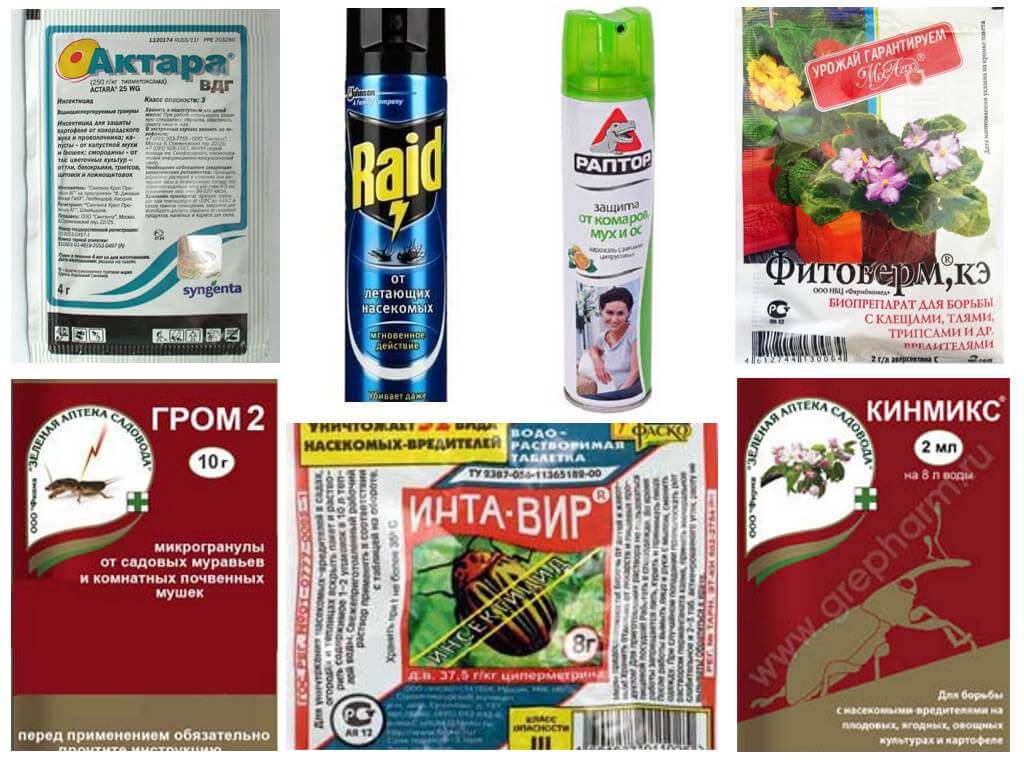
If all known methods have been tried, but the result has not been achieved, it is time to get rid of flower midges with chemicals. In any hardware store you can find a large number of different funds from midges. Any consultant will advise which one is best to purchase.
Most often, everyone uses:
- Dichlorvos: Raid, Heo, Raptor. All of these products are suitable for any type of flower midge.
- Solutions: Aktara, Thunder 2, Fitoverim, Agravertin, Kinmiks, Inta-Vir, Karbofos, Actellik.
Before starting treatment of the plant, you must study the instructions that came with the tool, since the application of each of them has features. If midges in the ground are destroyed by the solution, then after using it, you can not water the flower for at least three days.
If midges are wound up in a flower and you decide to use chemicals, it is important to adhere to safety recommendations. Always wear gloves, goggles, a bathrobe and a respirator when working.
Prevention
In order not to wonder what to do if midges are wound up, it is important to carry out prophylaxis, preventing the appearance of a pest. Reviews of insect behavior provide an opportunity to draw conclusions about the following steps that are most important for prevention:
- Do not overfill. The most important thing is to adjust the frequency and volume of irrigation. Keep in mind that in summer the plant requires a little more moisture, but there should be no “swamp” in the pot.
- In order not to start small midges, it is important to timely and regularly loosen the soil. This will supply the roots with oxygen and prevent soil decay.
- Humidity. Before watering the flowers, you must make sure that they really need it.
- Drainage. Allows enrichment with water, not allowing the soil to acidify and rot the organic matter remaining in the pot.
If there are suspicions of the appearance of “guests” at the flower, it is worth using one of the folk remedies or purchase a suitable remedy in the store. The most important thing, fight flies in flower pots need as early as possible to destroy the vile before it does irreparable harm.
